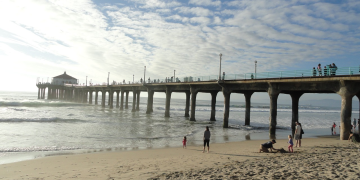
Square Metre for Butterflies: A network of green roofs in Edinburgh

Most butterfly species depend on specific plants for the nourishment of their larvae. In urban areas, the absence of these plants often limits butterfly populations. The Square Metre for Butterflies Project aims to demonstrate the potential of rooftop habitat to support pollinators and other wildlife and to make the case for green roofs on new developments. A collaboration between Butterfly Conservation and Royal Botanic Garden Edinburgh, through the Edinburgh Living Landscape Partnership, the project entailed asking owners of buildings in Edinburgh to plant on their rooftops at least one square metre of each of three wildflowers (Lotus corniculatus, Rumex acetosella and Helianthemum nummularium). These plants are favoured by three butterfly species (Polyommatus icarus, Lycaena phlaeas and Aricia artaxerxes). Planting was undertaken by project partners and building staff.
Impacts
This project has created nine new sites. At each rooftop site, biodiversity was monitored over a two-year period before being interrupted by the COVID19 pandemic. Early analysis suggests that the rooftop sites support a similar abundance and diversity of insects to nearby ground-level sites. This was found to be true even for the highest of rooftop sites.
A target butterfly species (Lycaena phlaeas) is suspected to have used a rooftop site to breed. The absence of the other two target butterfly species may have been due to their smaller size and difficulty in dispersing long distances. Larger butterflies such as Pieris rapae and Aglais urticae, were found to be frequent visitors to the rooftops. At all the rooftop sites, wild bees including bumblebees and solitary bees were observed foraging for pollen and nectar. At one site situated three stories above ground level, a breeding population of the Common Green Grasshopper, (Omocestus viridulus) was found.
The results confirm that even relatively small habitat patches on rooftops high above the ground can support a wide range of insect life. The project attests the valuable contribution that green roofs can make to native biodiversity. By stocking green roofs with native plants that are rich in pollen and nectar, the benefits to pollinator communities can be maximised.










